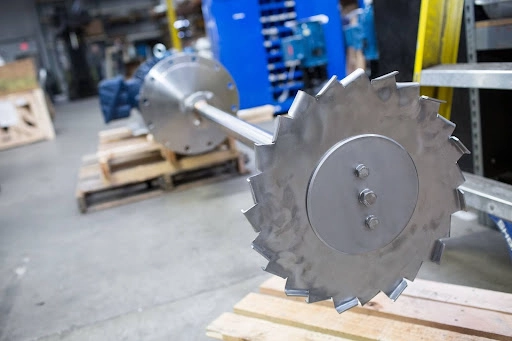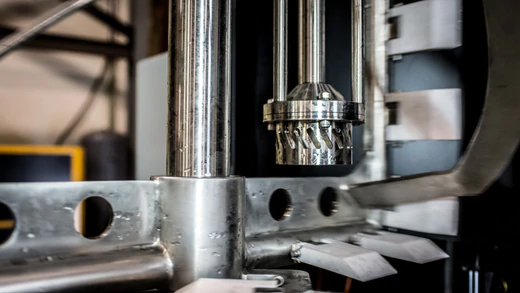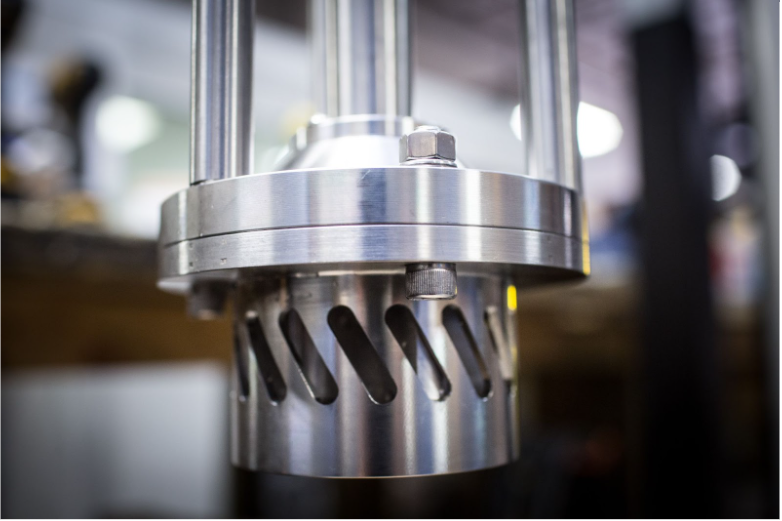Selecting the Right High-Shear Mixer Supplier for Your Needs
Choosing the right high-shear mixer supplier can be the difference between smooth, efficient operation and frequent setbacks due to equipment issues....

Access MXD Process resources including blogs, technical guides, manuals, and maintenance tips—everything you need to optimize, troubleshoot, and expand your process knowledge.
Discover who we are, the industries we serve, and the trusted brands behind our process equipment and environmental solutions. Learn how our team brings precision, innovation, and reliability to every project.
2 min read
MXD Process Feb 12, 2024 1:22:28 PM
In the precise and regulated world of pharmaceutical manufacturing, the importance of specialized equipment cannot be overstated. Among these, mixers play a pivotal role, each type tailored to specific processes and requirements of drug formulation. From achieving uniformity in blends to maintaining the integrity of sensitive ingredients, these mixers are integral to the industry.
Here, we discuss some of the key types of mixers utilized in pharmaceutical production, highlighting their functions and the nuances that make them suitable for this exacting field.
Eight of the most commonly used mixers in the pharma industry include:
1. High shear mixers
2. Ribbon blenders
3. Planetary mixers
4. Fluidized zone mixers
5. Double cone blenders
6. V-blenders
7. Homogenizers
8. Vacuum mixers
High shear mixers are designed to mix substances with different viscosities and densities efficiently. These mixers use a high-speed rotor to create a shearing action, which ensures rapid and uniform mixing. High shear mixers are ideal for emulsifications, dissolving solids in liquids, and preparing fine suspensions.
The two main types of high shear mixers are dispersers and rotor stator mixers:
Dispersers rapidly mix solids into liquids using a high-speed shaft with a disc blade, creating a vortex for effective dispersion. Ideal for paints, inks, and coatings, dispersers excel in dissolving solids and accommodating various viscosities.
Rotor stator mixers offer intense shear forces by spinning a rotor near a stationary stator, ideal for fine particle reduction. They’re crucial in producing emulsions and homogenized mixtures in food, pharmaceuticals, and cosmetics, ensuring consistent texture and stability.
Ribbon blenders are known for their versatility and are used for blending powders and granules. They consist of a U-shaped horizontal trough and a specially fabricated ribbon agitator. The ribbon agitator moves materials in two directions, ensuring a homogenous mix. Ribbon blenders are perfect for blending large batches of dry ingredients.
Planetary mixers are named for their mixing actions, similar to the way planets move in the solar system. These mixers have a central agitator that rotates in a planetary motion within a stationary bowl. Planetary mixers are excellent for mixing high-viscosity products such as ointments, creams, and gels, ensuring even and consistent blending.
Fluidized zone mixers are ideal for gentle and efficient mixing of delicate or heat-sensitive materials. They create a fluidized zone where all particles achieve a uniform state, ensuring effective mixing without damaging the product. Fluidized zone mixers are commonly used for coating and granulating processes.
Double cone blenders are used for mixing dry powder and granules homogeneously. They consist of two conical components that rotate to tumble the materials within. This action ensures a uniform mix without any shear or heat generation. Double cone blenders are particularly useful for mixing small batches of high-value ingredients.
V-blenders are known for their distinctive V-shaped design, which allows materials to flow smoothly and evenly. They are primarily used for blending dry powders and granular materials. The V shape ensures a thorough mix with minimal effort, making it a preferred choice for products that require gentle blending.
Homogenizers are critical in the pharmaceutical industry for creating stable emulsions and suspensions. They work by reducing particle sizes and distributing them uniformly throughout the solution. This is particularly important in the production of injectables and other formulations where consistency and particle size are crucial.
Vacuum mixers are designed to mix products under vacuum conditions. This is particularly important for removing air bubbles and preventing oxidation during the mixing process. Vacuum mixers are commonly used for mixing pastes, creams, and other semi-solid formulations.
The pharmaceutical industry relies heavily on various types of mixers to ensure the quality and consistency of its products. From high shear mixers for rapid blending to gentle ribbon blenders for dry powders, each mixer type plays a vital role in pharmaceutical manufacturing.
Understanding the specific applications and advantages of each mixer helps in selecting the right equipment for each unique pharmaceutical process, ultimately contributing to the development of safe and effective medications.
Looking for the best mixer for your processes? Reach out to one of our mixing experts!

Choosing the right high-shear mixer supplier can be the difference between smooth, efficient operation and frequent setbacks due to equipment issues....

While you may be familiar with industrial mixing, high-shear mixing is a specific category in industrial mixing with its own unique functions. High...

In the world of industrial mixing, efficiency and quality are paramount. Among the available mixing equipment, rotor stator mixers stand out for...